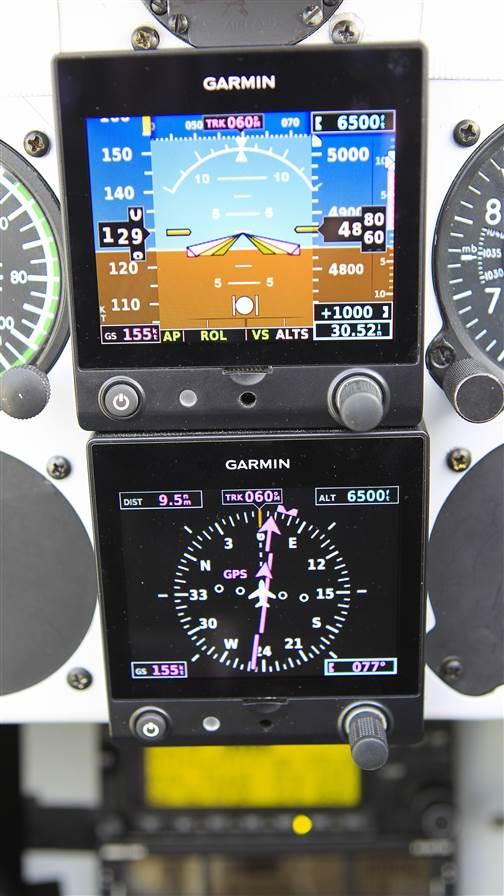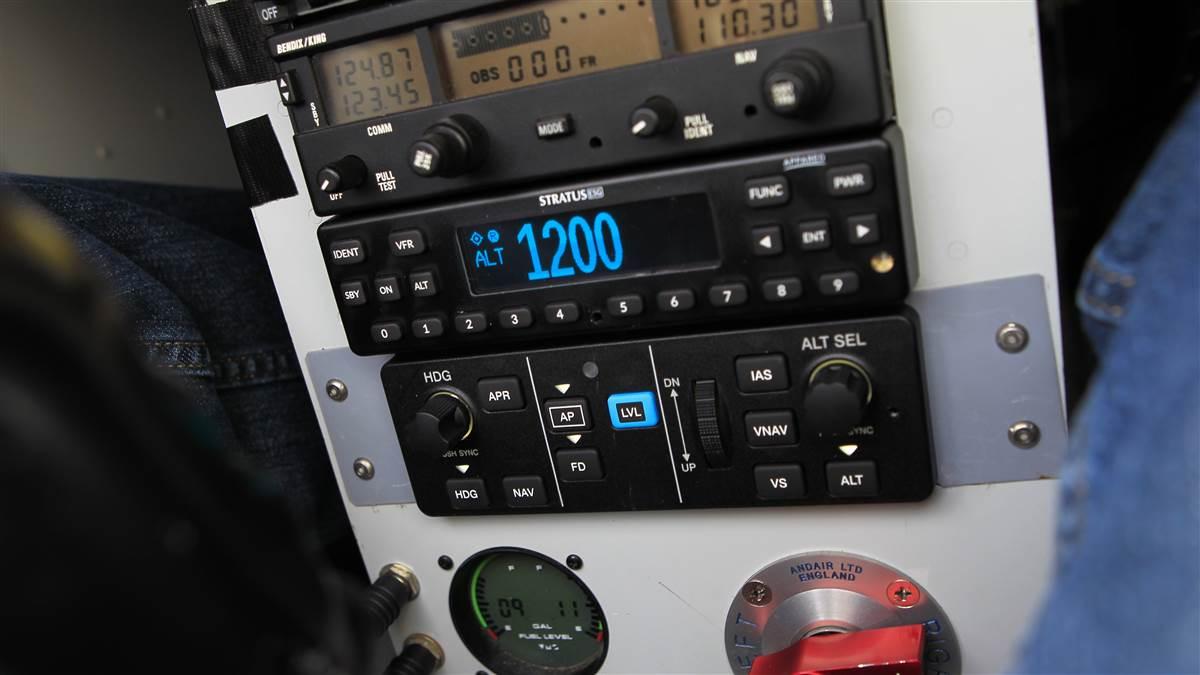Technology: A Blue Button Transforms a Sport Airplane
And what it brings to the GA fleet
 These thoughts nagged at me as I went through the nontrivial process of adding a Garmin autopilot to my Van’s RV–3 sport airplane. The single-seat airplane’s tiny size made installing and wiring autopilot servos in the wing and aft fuselage a job that seemed, at times, as though it could only be accomplished by a dexterous child—and an unheated hangar in winter didn’t help.
These thoughts nagged at me as I went through the nontrivial process of adding a Garmin autopilot to my Van’s RV–3 sport airplane. The single-seat airplane’s tiny size made installing and wiring autopilot servos in the wing and aft fuselage a job that seemed, at times, as though it could only be accomplished by a dexterous child—and an unheated hangar in winter didn’t help.
But when A&P mechanic with inspection authorization Carlo Cilliers and I finished the installation, the tiny airplane had been transformed into something I never thought it could be: a traveler. The RV is a nimble aerobat, and it’s relatively quick and efficient (160 knots true at eight gallons per hour). But simply holding headings and altitudes on cross-country flights is mind-numbingly repetitious and fatiguing. Even in still air, you can’t simply trim the airplane and take your hands off the controls. By the time you open a sectional chart or unwrap a Snickers bar, the airplane will have wandered far afield.
And aeronautical decisions that require a higher order of thought, such as evaluating changing weather, altering a flight plan, or diverting to another airport, are made more complex by the competing demands of flying the airplane precisely all the time.
My RV–3 already had a Garmin G5 all-in-one attitude instrument and a portable aera 660 GPS. So I only needed a GMC 305 controller ($750) and a pair of GSA 28 servos ($750 each) for a complete digital autopilot system. The G5 supplies the AHRS, and the aera provides WAAS GPS guidance.
The RV–3 is no slouch in the control harmony department, so I anticipated doing lots of hand flying even after the autopilot was installed. But the truth is, I’ve been letting the autopilot fly more and more.
 At first, I only engaged the blue “level” button when I wanted to check something on a chart, or its modern equivalent, an iPad. The autopilot did that so well I started using it almost exclusively in cruise (in heading or nav mode with altitude hold). Now, as soon as I’m a few thousand feet above the ground on departure, I engage my favorite autopilot feature, the IAS mode, and it holds the proper indicated airspeed throughout the climb. The rate of climb predictably diminishes during long ascents, but the airspeed doesn’t budge, the cylinders stay cool, and I’ve got more time to look outside for traffic. When I do fly by hand, the flight director (yes, it’s got one of those, too) makes me much more precise.
At first, I only engaged the blue “level” button when I wanted to check something on a chart, or its modern equivalent, an iPad. The autopilot did that so well I started using it almost exclusively in cruise (in heading or nav mode with altitude hold). Now, as soon as I’m a few thousand feet above the ground on departure, I engage my favorite autopilot feature, the IAS mode, and it holds the proper indicated airspeed throughout the climb. The rate of climb predictably diminishes during long ascents, but the airspeed doesn’t budge, the cylinders stay cool, and I’ve got more time to look outside for traffic. When I do fly by hand, the flight director (yes, it’s got one of those, too) makes me much more precise.
If this sounds like technology overkill for an 850-pound airplane, it is. But these capabilities are a harbinger of many exciting benefits that are coming to the wider GA fleet.
If this sounds like technology overkill for an 850-pound airplane, it is. But these capabilities are a harbinger of many exciting benefits that are coming to the wider GA fleet.Simple, reliable, lightweight autopilot systems are proven safety enhancements, and the FAA says it’s willing—even eager—to bring such technology to GA without forcing manufacturers to go through the regulatory thicket of costly and obsolete regulations. For example, the FAA is evaluating Experimental autopilots made by manufacturers TruTrak and Trio for possible addition to light GA aircraft, and if that effort succeeds, other manufacturers are sure to follow.
Garmin and rival Dynon have been swamped by demand for their non-TSO attitude indicators after they obtained supplemental type certificates to install them in FAA-certificated aircraft. That demand is sure to grow as the FAA approves additional capabilities (like horizontal situation indicators and integrated autopilots) that make them even more useful in a growing list of aircraft types.
Digital HSIs and modern autopilots cost a fraction of what their mechanical predecessors did, and they’re more reliable, lighter, and draw less current, too. And even though we pilots don’t like to admit it, these autopilots fly better than we do, and they have longer attention spans.
Even when fully caffeinated, I don’t make corrections five times a second like this autopilot does. And it doesn’t get tired, distracted, or fidgety like I do. Products like these make flying both safer and more fun—and they’re a compelling value. I believe in the blue button.
Email [email protected]



